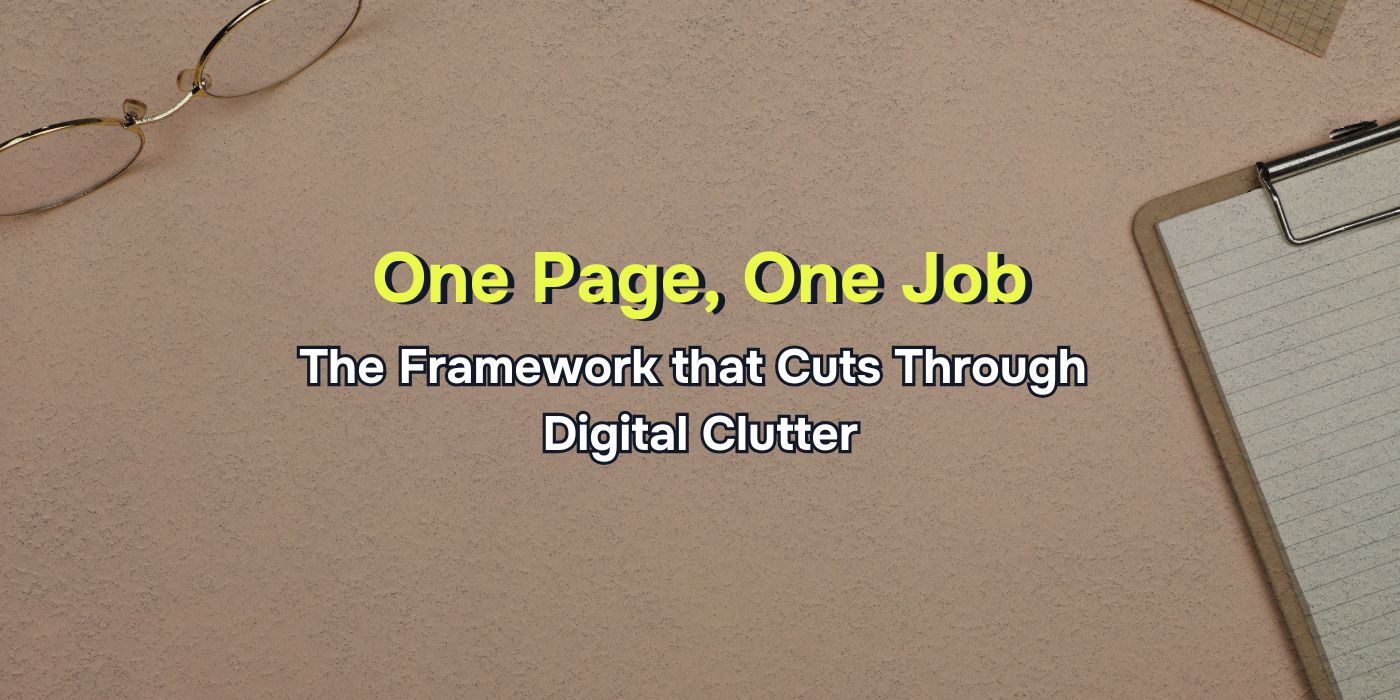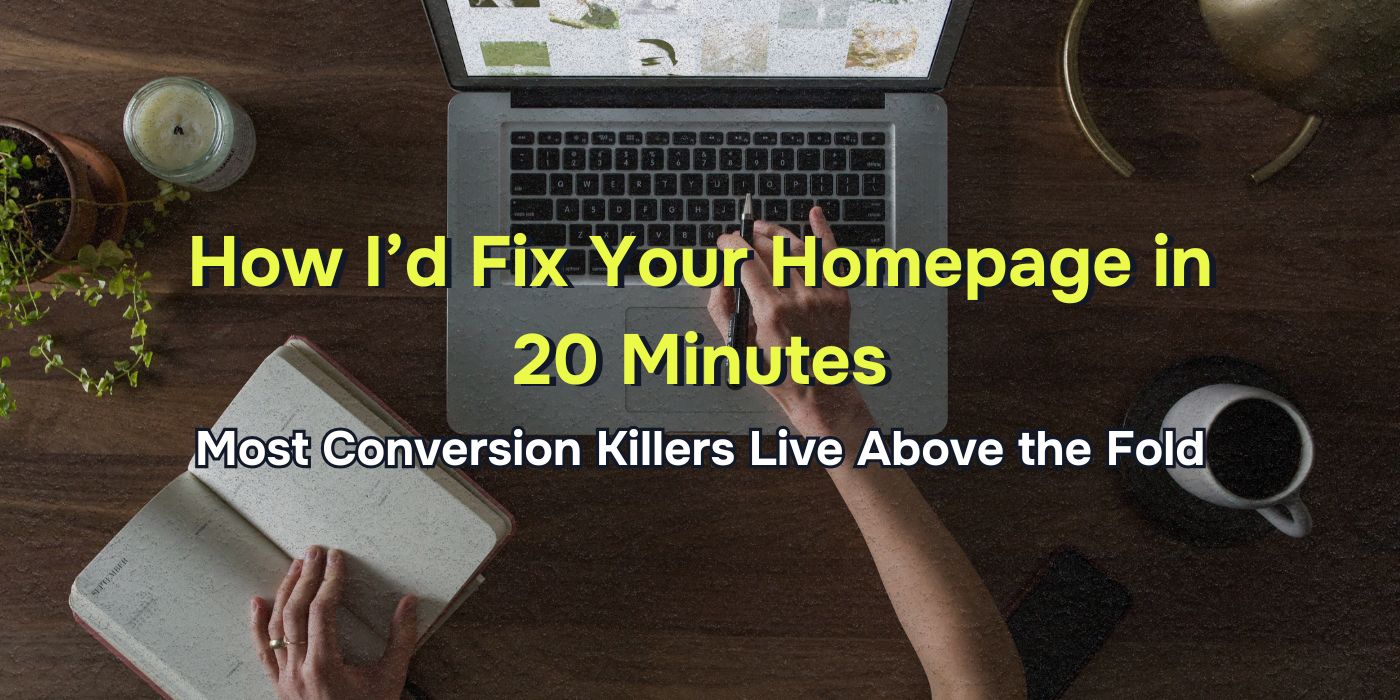Key Takeaways
- Above-the-fold content is now your first — and sometimes only — chance to be understood by AI. If your headline, subhead, and CTA don’t clearly state what you do and where, you’re invisible in AI-powered search.
- Literal beats clever every time. Skip the branding fluff. Use real words that match real searches — your service, your location, and the result you provide.
- Your CTA isn’t just for users anymore — it teaches AI how to interpret your page. Make it specific, actionable, and aligned with user intent (“Get a free quote in Tampa” > “Get started”).
- If you removed everything below the fold, your above-the-fold content should still tell the full story. What you do, who it’s for, where you do it, and how to take action — all in the first 500 pixels.
Most websites treat above-the-fold content like a branding opportunity. A clever headline, a background video, maybe a rotating carousel no one clicks. But here’s the truth: in the era of AI-powered search, your above-the-fold section isn’t just your visual first impression — it’s your best shot at getting indexed, summarized, and shown to the right people before they ever visit your site.
Search engines don’t scroll. They scrape. And if your most important information isn’t in those first few lines, you’re invisible.
Here’s what AI-powered search is looking for — and how to structure your above-the-fold content to get found, get cited, and get clicked.
Say What You Do, Literally and Immediately
The #1 job of your above-the-fold content is to answer the question:
“What is this page about, and who is it for?”
That means your headline (your H1) should be a crystal-clear summary of your business offering — not a clever slogan or brand statement.
Bad: “Experience the Future of Protection.”
Good: “Affordable Roof Replacement and Repair Services in Tampa, FL.”
The difference? One sounds cool. The other shows up in search. AI systems like Google’s SGE and Bing Copilot don’t have time to decode your brand tone. They’re looking for intent, clarity, and alignment with user queries — right up top.
Use Your Subhead to Add Context and Value
Once you’ve made your offer clear in the headline, the subhead should answer the next question:
“Why should I care?”
This is your space to add credibility, urgency, or a differentiator. Something like: “Serving Tampa homeowners since 2005 with fast, honest roofing backed by 500+ five-star reviews.”
That tells the visitor (and the AI):
- Where you work
- Who you serve
- Why you’re trustworthy
- How long you’ve done it
These details help your site match up with both commercial intent and local relevance — two things that matter more than ever in AI-driven search results.
Include a Clear, Clickable CTA — Immediately
Don’t make people hunt for the next step. Your CTA should be visible without scrolling and say exactly what happens next.
Bad: “Get Started”
Better: “Request a Free Roofing Quote in Tampa”
AI scrapes CTA language too — and Google may even include it in the SGE answer. That means your call to action isn’t just for visitors anymore. It’s part of your search presence. You’re training the algorithm to understand what kind of interaction to associate with your business. So make it count.
Reinforce Location, Service, and Outcome — Fast
Most AI-powered search engines are looking for entities they can link together. If you want your business to show up in response to a local, service-based query, your above-the-fold needs to make those connections easy:
- What you do (roof repair, web design, lawn care)
- Where you do it (city, region, or service area)
- What the result is (a safer home, a better-looking lawn, a faster site)
That might look like this:
“Need roof repair in Tampa? Our licensed team delivers same-day service and expert workmanship backed by a satisfaction guarantee.”
This reads well for users and gives search engines enough signal to understand who you are, what you offer, and where you operate.
Expert Tips: How Top Marketers Optimize Above-the-Fold for AI
If you want your most valuable section of your site to punch above its weight, here’s what the pros are doing:
- Keep the design simple, fast, and mobile-friendly.
- Clean beats clever every time. Cluttered hero sections with auto-play video, sliders, or layered text elements confuse search engines and overwhelm visitors.
- Include structured data and keyword reinforcement in the code. Pair your H1 with supporting schema (like WebPage, Service, and LocalBusiness) and ensure your location + service keywords appear in the meta title, H1, and within the first 100 words of visible content.
- Write the way people search — not the way brands talk. Use natural phrasing. “Affordable lawn care in Cumming” outperforms “Cultivating curb appeal through tailored solutions.” People don’t search in taglines.
- Test your content by reading only the top section. If someone reads only your hero section, do they know what you do, where you do it, and how to take action? If not, revise until they can.
Final Thought
Your homepage doesn’t start with a scroll — it starts with a snapshot. That top section, those first 3–5 lines of content? They’re your pitch. Not just to people, but to the systems deciding whether you show up at all.
If your above-the-fold content isn’t clear, structured, and aligned with what AI is trained to identify, you’ve already lost half the game — before the user ever clicks.
Great marketers don’t just design pretty hero sections. They design for performance. For machines. For visibility. Because in a world where the first impression is increasingly machine-mediated, clarity is strategy.
FAQs
What does “above the fold” actually mean in a modern web context?
It refers to the content visible on your screen before you scroll — typically the hero section with the headline, subheadline, and primary CTA. On mobile, that space is even tighter.
How does AI use my above-the-fold content?
AI models like Google’s SGE use this section to quickly identify your business type, service area, and relevance to a user’s query. If that information isn’t clear or structured, your site may be skipped entirely.
Can I still have branding language or creative elements?
Yes — just don’t lead with them. Use them lower on the page or in supporting content. Your top section should prioritize clarity and intent first, creativity second.
What tools can help me test how my above-the-fold content performs?
Try using tools like Google’s Mobile-Friendly Test, Screaming Frog, or even a simple user test: show someone just the hero section and ask them what the business does. If they can’t answer immediately, it needs work.





